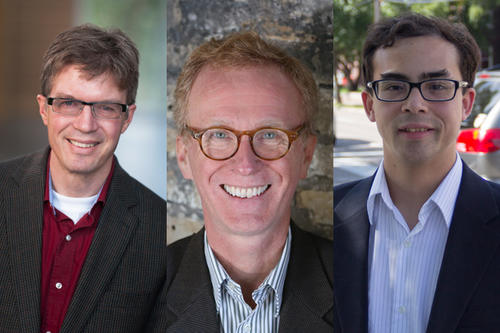
Last week, Gov. Mark Dayton announced the formation of a 15-member advisory council to draft policy recommendations in preparation for the arrival of autonomous vehicles, which are due in December.
As a future with self-driving transport gets closer to reality, several University of Minnesota experts are available for comment on the technology, its implications for traffic safety, law and policy, and envisioning communities and transportation systems.
Frank Douma
“Autonomous vehicles will be truly disruptive in their impacts to transportation and urban planning. Consequently, they present a great opportunity to create policy that will lead to a transportation system that benefits just about everyone in a community.
“A key benefit of autonomous vehicles will accrue to people that cannot drive. Physical, financial or other disabilities will no longer need to mean a lower level of mobility and access than the rest of us enjoy.”
Frank Douma is director of the State and Local Policy Program and coordinator of the Master of Urban and Regional Planning degree program at the University of Minnesota’s Humphrey School of Public Affairs. He is also a research scholar at the University’s Center for Transportation Studies.
Contact information:
[email protected]
612-626-9946 (office)
Tom Fisher
“Shared autonomous vehicles (SAVs) require fewer lanes (typically no more than one in each direction), narrower lanes (8 feet vs the 11 to 12-foot lanes now), and much less parking (which will mainly be in remote lots in the middle of the night). This will free up a lot of space in the public for other uses – bike lanes, green infrastructure, wide sidewalks, recreation space – and as much as 30% of the land area that communities, on average, devote to the parking of cars. This is a huge opportunity to improve the quality of life and the financial and environmental health in our cities and suburbs.
“We should stop building infrastructure for the old technology – gas-fueled cars with drivers – and start building infrastructure for what is coming very soon. My main worry is that the coming investment in infrastructure will widen roads when we need to be narrowing them, expand bridges that don’t need to be expanded, and generally waste a lot of money by not preparing for the transformation in our transportation system already underway.”
Tom Fisher is a professor in the University of Minnesota’s College of Design, director of the Minnesota Design Center and Dayton Hudson Chair in Urban Design.
Contact information:
[email protected]
612-624-1013 (office)
612-237-4185 (cell)
Michael Levin
“Autonomous vehicles have the potential to increase the capacity of existing roads. Cooperative adaptive cruise control could reduce following headways to increase traffic flow. Replacing traffic signals with autonomous intersection management could additionally reduce delays at urban intersections. The combination of these technologies could reduce congestion, but many of these technologies will not be possible until most vehicles on the road are autonomous.
"Autonomous vehicles could create new opportunities for travelers. Longer trips become less onerous when travelers can engage in other tasks while driving. Unoccupied autonomous vehicles also could reposition themselves to avoid parking fees and be shared among household members. Vehicles should also improve mobility for travelers who cannot drive. Therefore, autonomous vehicles are likely to result in more vehicles on the road and greater demand for our road infrastructure.
“Autonomous vehicle technologies could increase congestion until they are widespread enough to modify or replace current traffic controls such as traffic signals. Even then, it is difficult to predict whether or how the balance of increased supply and increased demand will affect travel times.”
Michael Levin is an assistant professor in the Department of Civil, Environmental, and Geo- Engineering at the University of Minnesota.
Contact information:
[email protected]
832-359-0120 (cell)
- Categories:
- Science and Technology





